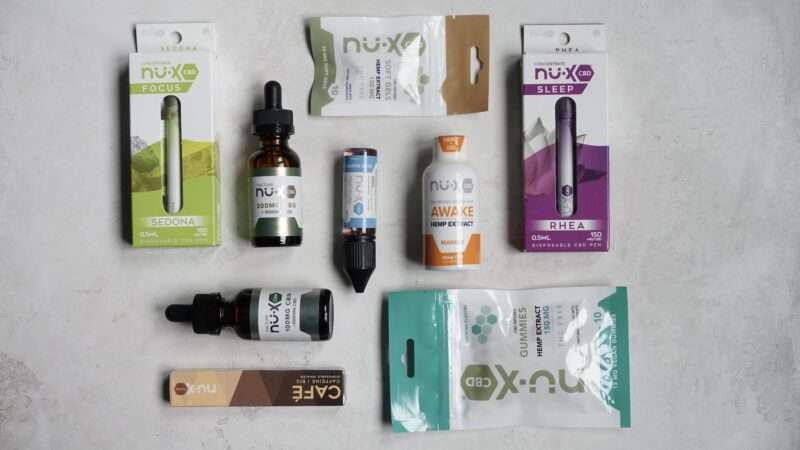
A new study documents a shift from smoking to vaping among adolescent cannabis consumers, which the researchers think shows there is "an urgent need for public health intervention and increased regulation." But it is hard to see how that conclusion follows from the survey data, especially since vaping avoids the potentially dangerous combustion products generated by smoking.
In the study, which was reported yesterday in the journal Addiction, Columbia University epidemiologist Katherine Keyes and her collaborators analyze data from the University of Michigan's Monitoring the Future study, which surveys students in the eighth, 10th, and 12th grades. Between 2017 and 2019, the overall rate of "occasional" cannabis consumption without vaping (defined as use on five or fewer days in the previous month) fell from 6.9 percent to 4.4 percent. The prevalence of "frequent" use (on six or more days in the previous month) fell from 3.8 percent to 2.1 percent.
Meanwhile, occasional "cannabis use that included any vaping" rose from 1.2 percent to 3.5 percent, and frequent use jumped from 2.1 percent to 5.4 percent, which a press release about the study describes as a "major uptick." By 2019, Keyes et al. note, "frequent cannabis use with vaping was more prevalent than occasional cannabis use with no vaping": 5.4 percent vs. 4.4 percent. They report that "using cannabis with vaping delivery systems is now more common than smoking alone in almost every demographic group across sex, race/ethnicity, urbanicity and parental education."
The prevalence of any cannabis use rose between 2017 and 2019, from 13.9 percent to 15.4 percent. Notably, that rate has since declined in all three grades: Between 2019 and 2021, past-month marijuana use fell from 6.6 percent to 4.1 percent among eighth-graders, from 18.4 percent to 10.1 percent among 10th-graders, and from 22.3 percent to 19.5 percent among 12th-graders. During the same period, the prevalence of past-month marijuana vaping also fell: from 3.9 percent to 2.9 percent among eighth-graders, from 12.6 percent to 8.4 percent among 10th-graders, and from 14 percent to 12.4 percent among 12th-graders.
In 2021, marijuana vaping was still substantially more common in all three grades than it was in 2017, when the survey began asking about that mode of consumption. But overall past-month marijuana use was down across the board. Among eighth- and 10th-graders, the rate was lower in 2021 than it had been at any point since 1992. Among 12th-graders, the rate fell to a 13-year low.
"The results of this and other studies underscore the need to reduce cannabis use, including vaped cannabis, in adolescents," Keyes and her co-authors say. But when the more recent numbers are included, it becomes clear that we are not talking about an increase in adolescent marijuana use. We are talking about a shift in the way that teenagers consume marijuana, primarily from smoking to vaping.
On the face of it, that trend does not seem very alarming. Just as vaping nicotine avoids the toxins and carcinogens generated by burning tobacco, vaping cannabinoids (mainly THC) avoids the potentially hazardous substances generated by burning marijuana. While iffy additives in black-market THC vapes can be dangerous, the vapes produced by state-regulated marijuana businesses are a safer bet.
"Vaporization has been suggested as a safer intrapulmonary delivery system than smoking, since by heating rather than combusting plant matter it avoids the formation of pyrolytic toxic compounds, including carbon monoxide and carcinogens," University of Wollongong psychologist Nadia Solowij notes in a 2018 JAMA Network Open article. Although she adds that there is "little robust evidence from clinical trials or epidemiological studies to support vaporization being a safer option," the chemical profile alone suggests it is.
The authors of the Addiction study are nevertheless alarmed, for two main reasons. First, they are concerned about "high THC delivery" by vapes, which they worry could increase the "potential for transition to cannabis use disorder" or at least "lead to unpleasant and dangerous consequences for youth users with lower tolerance." Second, they note that "cannabis vaping is very strongly associated with other substance use."
If we assume that cannabis consumers adjust their intake based on the potency of the product they are using, higher THC content is not inherently problematic. Americans of a certain age may have been accustomed to consuming an entire pipeful of low-quality marijuana in college, an approach that would be foolhardy with the high-THC strains available at pot shops in places like Denver, Seattle, Las Vegas, and Los Angeles. But since consumers who smoke or vape marijuana feel the effects immediately, they should figure that out pretty fast.
A 2021 review of the relevant research found "there is some evidence from experimental studies that people who use higher potency cannabis for recreational purposes can titrate their THC doses, but less evidence that regular cannabis users do in fact do so." In any event, adolescents with less cannabis experience may be less likely to titrate their doses.
Dale Gieringer, California director of the National Organization for the Reform of Marijuana Laws, questions "the notion that cannabis e-cigs are dangerous on account of high levels of THC." Judging from the experiences reported in his own "informal survey of friends who use e-cigs," he says in an email, "most agree it's harder to get high on e-cigs than on joints or edibles." Gieringer says "the reason for this appears to be that most e-cigs deliver relatively small doses of THC per puff," although "exceptions have been reported with black-market products." He suggests that laboratory studies comparing the outputs of vapes and joints could confirm (or disprove) that impression.
A 2018 study compared the effects of smoked marijuana and marijuana consumed with a Volcano Medic vaporizer, which heats ground plant matter rather than extracts of the sort found in cannabis e-cigarettes. It found that "vaporized cannabis produced greater pharmacodynamic effects and higher concentrations of THC in blood compared with equal doses of smoked cannabis." That contradicted the results of a 2016 study that used the same vaporizer. "Few differences were observed between smoked and vaporized blood cannabinoid pharmacokinetics," the authors reported. They concluded that "vaporization and smoking provide comparable cannabinoid delivery."
Another consideration, Solowij notes, is the presence or absence of other cannabinoids. "There is significant interest in the potential for CBD to ameliorate adverse effects of THC," she writes. "A few vaporization studies have begun to investigate higher doses of CBD delivered by these means. It appears important to determine whether higher proportional concentrations of CBD in plant matter may protect against the greater adverse effects observed in the [2018 study] and indeed whether protection may be conferred for frequent and infrequent users alike." Gieringer agrees that a dearth of "buffering substances" in some cannabis vapes, which include products with no CBD as well as products with varying mixtures of THC and CBD, could make a difference in the consumer's experience.
What about the association between marijuana vaping and other kinds of drug use? Keyes et al. note that "those who vape and smoke nicotine are more than 40 times more likely to also vape and smoke cannabis, and frequency of cannabis use with vaping increases in a monotonic fashion with increasing occasions of binge drinking." If anything, that framing suggests that smoking tobacco, vaping nicotine, and heavy drinking are "gateways" to vaping marijuana, rather than the other way around. In any case, it is not clear what such correlations signify: Does one kind of drug use make teenagers more likely to consume other substances, or do preexisting differences explain their attraction to all these psychoactive substances?
Even if you think Keyes et al.'s concerns about the shift from marijuana smoking to marijuana vaping are valid, their policy conclusions seem like a non sequitur. They say "cannabis products are generally more available to youth as more states allow legalized use for adults." But they also note that "the impact of these laws on youth cannabis use remains inconsistent and generally null" (emphasis added). In other words, the weight of the evidence suggests that legalizing marijuana for adults, contrary to prohibitionists' warnings, has not led to an increase in underage consumption.
That evidence does not stop Keyes and her colleagues from asserting that the "major uptick" in adolescent marijuana vaping between 2017 and 2019 (which now seems to be abating) demonstrates "an urgent need" for "more regulation." They note that "marketing efforts for a wide variety of cannabis products have proliferated in the legalized cannabis environment." They add that "cannabis vaporizers are marketed on a wide variety of platforms including social media." On Instagram, "cannabis vaporizers are followed by upwards of half a million people, and advertisements often feature young women and do not discuss age restrictions on use." The researchers worry that "these campaigns are viewed frequently by adolescents" and "probably influence their behavior."
If that's true, why haven't those "marketing efforts" resulted in more marijuana consumption by teenagers in states that have legalized medical or recreational use? Keyes et al. do not specify exactly what sort of "regulation" they have in mind, but they say "efforts to reduce exposure to marketing [are] critical." They seem to be arguing that the influence of such messages has been limited to encouraging a shift from smoking to vaping among teenagers who use marijuana, even as the overall prevalence of adolescent cannabis consumption declines.
Gieringer thinks the alarm about that trend is overblown. "On the whole," he says, "I believe a shift from smoking to e-cigs is a good thing for adolescents."
The post Teenagers Who Use Marijuana Are Shifting From Smoking to Vaping. Should We Be Alarmed? appeared first on Reason.com.







